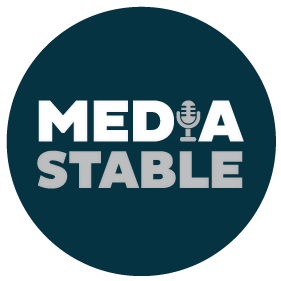Fake news is not new
It’s actually been around for a few hundred years, however we have only just really begun to take more notice as the internet has tightened its grip with a prime example being the US election and the impact across the globe. Fake news is not necessarily about deception but rather the interpretation of facts. Defining fake news is a complex task as discussed in this piece on the Conversation. Tackling and calling it out is an even more difficult task.
Luckily enough, in Australia our media market is dominated by only a handful of key-players who do indeed tend to control a majority of the media that we consume on a daily basis, and with a smaller population we are less subjected to becoming so divisive. Our bigger issue though is with the “news” that is distributed across social media, and then so easily shared at the click of a button.
This is where you need to be watching, listening and reading traditional media. Traditional media can be compared to a thought leader acting as a guide for those who are keen to play an active role within it. It promotes discussion, creates an interest and encourages you to be reactive to the right topic and outlet. Traditional media whether it be television, radio, or print is there to deliver you the facts. Preferably facts with no bias, however we unfortunately do not live in a Utopian society and there will always be a little leaning to the left or right.
The harsh reality is that quoting “Fake News” can quickly lead to the loss of credibility as an expert. We talk to our experts and explain we want you to be involved, keep your finger on the pulse when it comes to “real time” events. Yes, social media platforms do make that easier especially for those with limited time, but you really do need to do your homework. You may think it’s as easy as logging off, we wish it was that simple; unfortunately when you do hit that button to log back on it is still going to be there. Staring you in the face and beckoning for you to read it, because nobody can resist a click bait headline.
So how can you identify the real from the fake? What steps do you need to take to make sure the reactive commentary you are working on is based on a true news piece?
- Brush up on your fact checking A-Game.
There are many resources to assist you in getting the facts straight. org, Snopes.com and ABC News Australia Fact Check are just a few of many that can assist you. Google can also be helpful in some cases if the story is big enough.
- Think about who/what initially posted the original article. Is it a trusted news source? Are you familiar with them? Check they are a verified outlet.
- Stay away from headlines that appear sensationalised, especially on social media. These are designed to increase click rates and up engagement. Media is a business, they too have KPI’s they need to hit when it comes to digital delivery and they achieve this by drawing you in with these headlines.
Remember just because the piece was posted instantly does not make it factual. We live in a time where there is a rush to be first. To be the first to offer commentary can make you valuable as an expert, however to be the first to offer the commentary and it being true will have you positioned as the real standout expert.
Written by Michelle Soia, General Manager of Media Stable.
